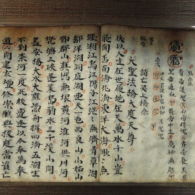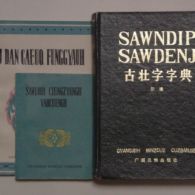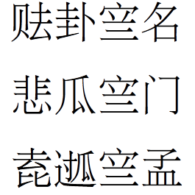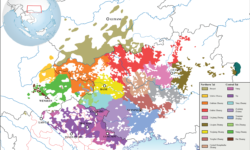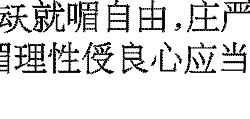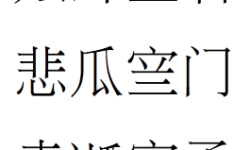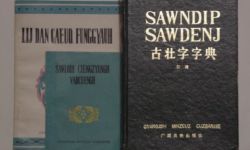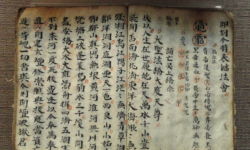Profile
The Sawndip or Old Zhuang script is one of a number of ancestral scripts, probably more than a thousand years old, that survive in China — and the fact that it still exists and is used by a minority is a sign of the degree to which China, no matter how much it presents a unified front to outsiders, is actually a fascinating mix of cultures and traditions.
The Zhuang are an ethnic group who mostly live in the Guangxi Zhuang Autonomous Region in southern China. They form one of the fifty-six ethnic groups officially recognized by the People’s Republic of China. Their population, estimated at 18 million, makes them the largest minority in China.
Zhuang is one of the array of northern Tai languages, and Sawndip is the Zhuang name for their own script, even though, curiously, it means “raw characters.” The script is used not only by the Zhuang, but also by the closely related Bouyei in Guizhou, China; Tay in Vietnam; and Nung in Yunnan, China, and in Vietnam.
Sawndip, which is probably about 600 years old, is made up of a combination of Chinese characters, Chinese-like characters and other symbols. Like Chinese, it can be written horizontally from left to right, or vertically from right to left. The script has never been standardized; some characters have as many as a dozen variants.
It has been used mainly by Zhuang singers and ritual specialists to record poems, scriptures, folk tales, myths, songs and play scripts. Traditional songs, or stories, are often adapted over time, and new works continue to be written to this day.
After the Chinese Revolution in 1949, even communist revolutionary propaganda was written using Sawndip.
In 1957, the Chinese government introduced an official, alphabet-based script, and that became the standard for official documents, laws and newspapers, but at least at the time it was largely ignored by the Zhuang themselves because it was based on a single dialect, not widely spoken.
The current Chinese government policy is to standardize language usage and reduce the range and variation of minority spoken and written forms. After five years in preparation, a Dictionary of Ancient Zhuang Characters was published in 1989 with 4,900 entries and over 10,000 characters – the first and only dictionary of Zhuang characters published to date; but the official position seems to be that Sawndip is “historical” and its usage is largely local, vernacular, and unsupported by local and regional governments.
You can help support our research, education and advocacy work. Please consider making a donation today.
Links
General Script, Language, and Culture Resources
- Omniglot
- Wikipedia
- Wikipedia (Zhuang Languages)
- Wikipedia (Zhuang People)
- Scriptsource
- The Chinese-based writing system of the Zhuang language

